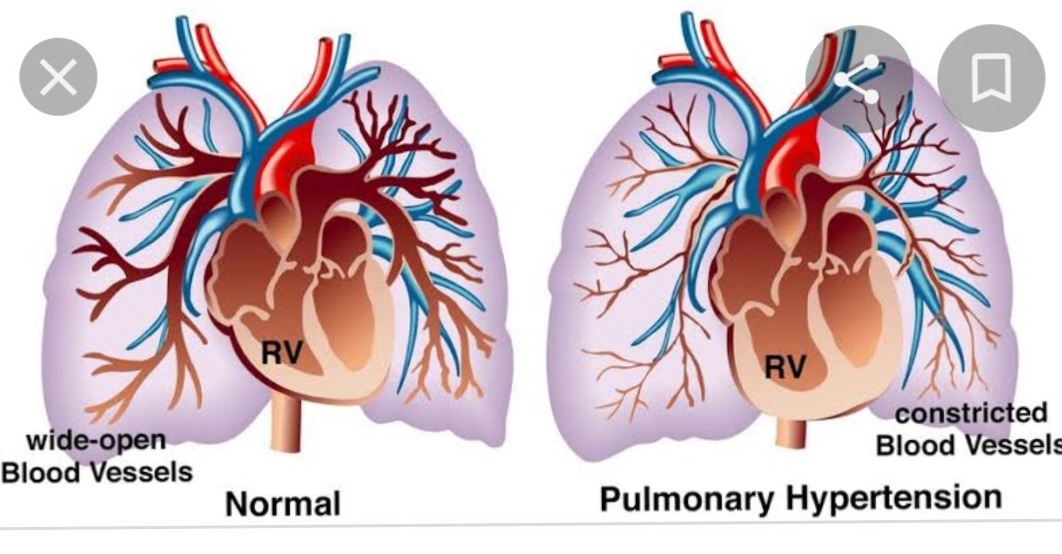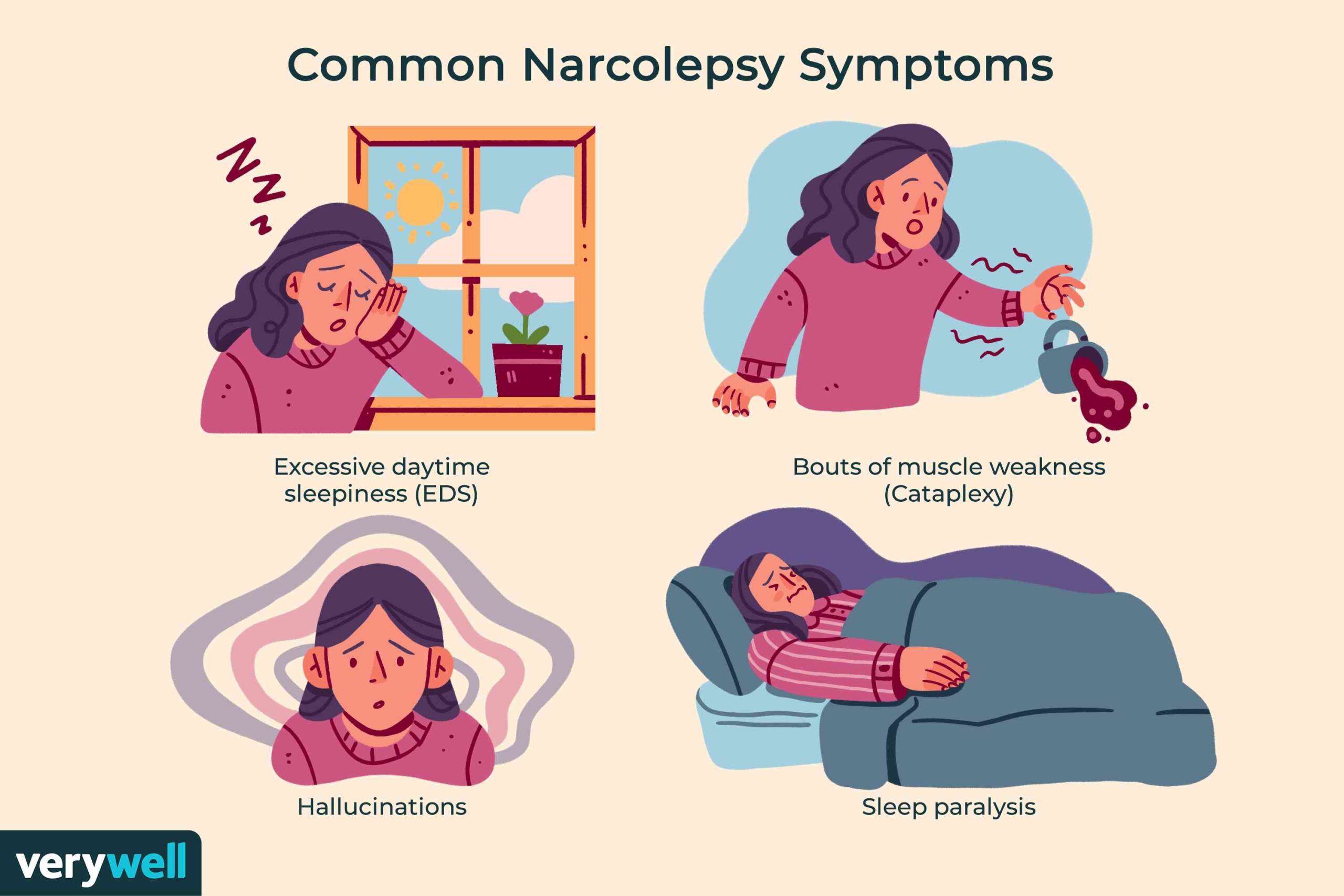What Is Narcolepsy-various aspects-
Narcolepsy is a long-term neurological condition that impacts the brain’s capability to control sleep-wake cycles. It may lead to severe daytime fatigue, abrupt sleep episodes, and muscle weakness.


Symptoms
Daytime fatigue: Individuals with narcolepsy might feel energized after waking up, yet subsequently experience significant sleepiness throughout the day.
Sleep episodes: Individuals with narcolepsy might unexpectedly fall asleep without any forewarning.
Cataplexy: A temporary inability to control muscles that can be provoked by intense feelings, such as joy or frustration.
Sleep paralysis: A short-term inability to move or communicate upon waking or drifting off to sleep.
Interrupted sleep: Individuals with narcolepsy may struggle to maintain sleep for extended durations.
Intense dreaming: Individuals with narcolepsy may encounter vivid dreams, particularly during the process of falling asleep or awakening.
Causes
The precise reason for narcolepsy remains unclear.
A genetic mutation related to low quantities of hypocretin, a brain protein responsible for managing sleep-wake cycles, may influence the onset of narcolepsy.
Additional elements, including stress, brain injuries, exposure to harmful substances, and infections, might also be significant.
Treatment
While there is no remedy for narcolepsy, medications and healthy lifestyle adjustments can assist in controlling the condition.
Narcolepsy is a long-lasting neurological condition that impacts the brain’s capacity to manage sleep-wake patterns. Individuals with narcolepsy might feel refreshed upon rising but then experience significant drowsiness for a large portion of the day.
Narcolepsy-afterall what is it ?
Narcolepsy is a neurological disorder that causes excessive daytime sleepiness and sudden attacks of sleep.
Narcolepsy is a neurological disorder that causes excessive daytime sleepiness and sudden attacks of sleep. It is caused by the brain’s inability to regulate the production of the sleep-inducing hormone, melatonin. The most common symptoms are excessive daytime sleepiness, cataplexy (sudden loss of muscle tone), hypnagogic hallucinations (vivid dreams at the onset of sleep), and disrupted nighttime sleep with frequent awakenings.
Narcolepsy is a long-term neurological condition that impacts the brain’s capacity to manage sleep-wake patterns. Individuals with narcolepsy might feel refreshed upon awakening yet experience significant drowsiness for a large portion of the day.


It is a long term neurological condition that causes excess day time sleepiness.
Incidence of narcolepsy –
A genetic mutation resulting in decreased amounts of hypocretin, a brain protein that manages sleep-wake patterns
An autoimmune problem that prompts the immune system to target healthy cells
Stress
Brain injury
Contact with toxins
Infection
1-There are possibilities that it is due to the deficiency of hypocrites or orexin.
2-Genetic
3-In type -1 Narcolepsy there is deficiency of hypocretin.
Narcolepsy might be associated with exposure to the H1N1 influenza, often referred to as the swine flu. It may also be connected to a specific version of the H1N1 vaccine that was administered in Europe.
Risk factors for Narcolepsy –
There are just a handful of identified risk factors for narcolepsy, such as:
Age. Narcolepsy generally starts between the ages of 10 and 30.
Family history. If you have a close relative with narcolepsy, your risk is 20 to 40 times greater.
Is narcolepsy contagious?
Narcolepsy is not contagious. It cannot be transmitted to or acquired from other individuals.
Differential diagnosis-
How is narcolepsy diagnosed?
A Neurologist may suspect narcolepsy depending on your symptoms. However, narcolepsy exhibits symptoms that overlap with numerous other brain- and sleep-related disorders. Because of this, the only definitive way to diagnose narcolepsy is through specialized diagnostic evaluations.Prior to conducting most of the primary tests for narcolepsy, a Neurologist will first verify that you’re obtaining sufficient sleep. This typically involves straightforward tracking methods for your sleep-wake patterns, such as actigraphy. This generally uses a watch-like device that you wear on your wrist to monitor movement patterns (such as when you’re asleep versus when you’re awake and moving around).
What tests will be done to diagnose narcolepsy?
Some potential tests for diagnosing narcolepsy include:
Sleep study (polysomnogram).
Multiple sleep latency test (MSLT).
Maintenance of wakefulness test.
Spinal tap (lumbar puncture).
Sleep study (polysomnogram)
A sleep study includes various types of sensors that monitor your sleep patterns. A central component of a comprehensive sleep study, officially referred to as a polysomnogram, is that it incorporates electroencephalogram (EEG) sensors. These sensors track your brain activity, enabling healthcare providers to identify which stage of sleep you’re experiencing at any given moment.
A sleep study can assist in diagnosing narcolepsy because individuals with this disorder enter the REM stage of sleep unusually quickly in comparison to individuals without it. They will also experience sleep interruptions with periods of wakefulness, which the sleep study can likewise detect and document.
Another essential reason for conducting a sleep study is that excessive daytime sleepiness is also a primary symptom of sleep apnea. A sleep study can eliminate the possibility of sleep apnea.
Multiple sleep latency test
This test assesses whether or not you are likely to fall asleep during the day. This evaluation consists of timed naps that are scheduled within a specific timeframe. This test can help ascertain if a person experiences excessive daytime sleepiness, which is an essential symptom of narcolepsy. This test often occurs the day after an overnight sleep study.
Maintenance of wakefulness test
This test evaluates if you can remain awake during the day, even in situations where it would be simple to drift off to sleep. Although it’s not commonly used in testing for narcolepsy, it remains possible and can rule out other concerns. It’s also beneficial for assessing whether stimulant treatments are effective.
Spinal tap (lumbar puncture)
This test can determine if the orexin levels in your cerebrospinal fluid (CSF) are low. This is a crucial method for diagnosing type 1 narcolepsy. Low orexin levels can also indicate that an individual with narcolepsy may develop cataplexy, even in the absence of that symptom so far. Unfortunately, orexin levels do not fluctuate in individuals with type 2 narcolepsy, so it isn’t always a diagnostic aid.
Other tests
Many additional tests are also prevalent for individuals diagnosed with narcolepsy. A reason for this may be the presence of cataplexy as a symptom. Cataplexy resembles various other motor (movement-related) symptoms associated with brain disorders, such as atonic seizures (also referred to as drop attacks).
Due to this, Neurologist may initially examine for more critical conditions such as seizures and epilepsy,
Symptoms of narcolepsy
Individuals with narcolepsy may experience additional sleep disorders. They could have obstructive sleep apnea, where breathing intermittently ceases during the night. Alternatively, they may manifest their dreams, a condition referred to as REM sleep behavior disorder. They may also face difficulties in initiating or maintaining sleep, referred to as insomnia.
Narcolepsy can lead to complications, including:Misconceptions about the condition. Narcolepsy can impact work, education, or your personal life. Others may perceive individuals with narcolepsy as lethargic or unmotivated.
Effects on romantic relationships. Strong emotions, such as anger or happiness, can trigger cataplexy. This may lead individuals with narcolepsy to distance themselves from emotional connections.
Physical injury. Sudden sleep onset can lead to harm. There is a heightened chance of a car accident if you doze off while driving. Your likelihood of sustaining cuts and burns increases if you fall asleep while preparing food.
Weight gain. Individuals with narcolepsy are more prone to being overweight. Sometimes weight increases rapidly when symptoms first appear.
A sleep examination, referred to as polysomnography.
This assessment evaluates signals while you sleep utilizing flat metal discs referred to as electrodes positioned on your scalp. For this assessment, you are required to stay overnight at a medical establishment. The assessment gauges your brain activity, heart rhythm, and respiration. It additionally captures your leg and eye movements.
How to avoid sleep paralysis?
To prevent sleep paralysis, you can enhance your sleep hygiene, decrease stress, and steer clear of substances that can disturb your sleep.
Enhance sleep hygiene
Acquire 7–9 hours of sleep each night
Retire and rise at the same time daily
Establish a pleasant sleeping atmosphere
Evade bright lights and sounds in your bedroom
Refrain from using screens for 1–2 hours prior to bedtime
Steer clear of napping too close to bedtime
Decrease stress Make an effort to lessen stress in your life and Engage in regular exercise.
Steer clear of substances that can disturb sleep
Refrain from consuming large meals, smoking, or drinking alcohol or caffeine shortly before bedtime
Restrict caffeine and alcohol consumption, particularly in the evening
Evade sleeping on your back
Resting on your back can heighten the chances of sleep paralysis
Consider consulting a doctor
If you face frequent sleep paralysis, you ought to seek advice from a doctor or sleep expert.
What is sleep paralysis?
Sleep paralysis happens when your brain awakens from REM sleep while your body remains unresponsive. This can lead to sensations of suffocation, and you might have hallucinations.
FOR FURTHER INFORMATION IN GREAT DETAIL ON Narcolepsy in Marathi PL CLICK ON THE LINK GIVEN BELOW-It is always better to view links from laptop/desktop rather than mobile phone as they may not be seen from mobile phone. ,in case of technical difficulties you need to copy paste this link in google search. In case if you are viewing this blog from mobile phone you need to click on the three dots on the right upper corner of your mobile screen and ENABLE DESKTOP VERSION.
FOR FURTHER INFORMATION IN GREAT DETAIL ON Narcolepsy in Hindi PL CLICK ON THE LINK GIVEN BELOW-It is always better to view links from laptop/desktop rather than mobile phone as they may not be seen from mobile phone. ,in case of technical difficulties you need to copy paste this link in google search. In case if you are viewing this blog from mobile phone you need to click on the three dots on the right upper corner of your mobile screen and ENABLE DESKTOP VERSION.
FOR FURTHER INFORMATION IN GREAT DETAIL ON What is Insomnia – Symptoms, Causes, And Treatments PL CLICK ON THE LINK GIVEN BELOW-It is always better to view links from laptop/desktop rather than mobile phone as they may not be seen from mobile phone. ,in case of technical difficulties you need to copy paste this link in google search. In case if you are viewing this blog from mobile phone you need to click on the three dots on the right upper corner of your mobile screen and ENABLE DESKTOP VERSION.
If Any Patient of ENT Requires Any Surgery, Opd Consultation Or Online Consultation In Clinic of ENT Specialist Doctor Dr. Sagar Rajkuwar ,He May Contact Him At The Following Address-
Prabha ENT Clinic, Plot no 345,Saigram Colony, Opposite Indoline Furniture Ambad Link Road ,Ambad ,1 km From Pathardi Phata Nashik ,422010 ,Maharashtra, India-Dr. Sagar Rajkuwar (MS-ENT), Cell No- 7387590194, 9892596635
Issued in public interest by –
www.entspecialistinnashik.com






